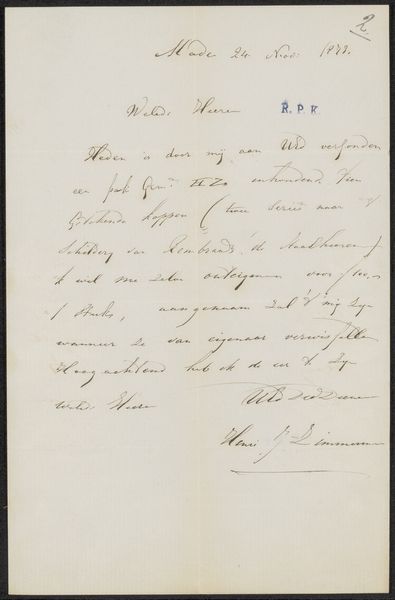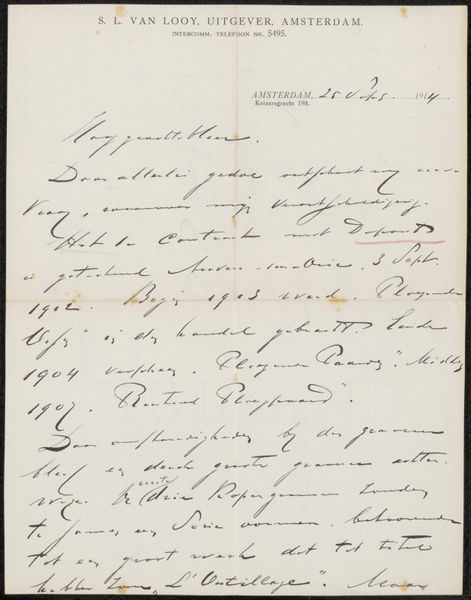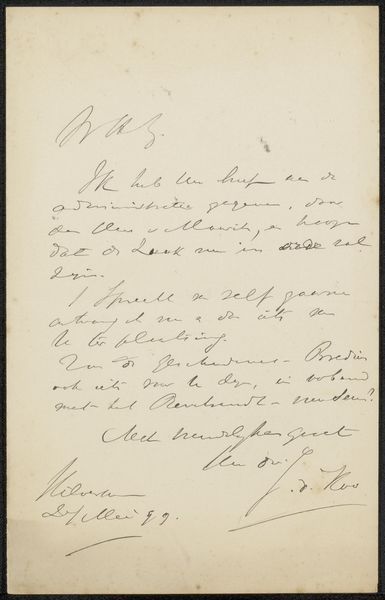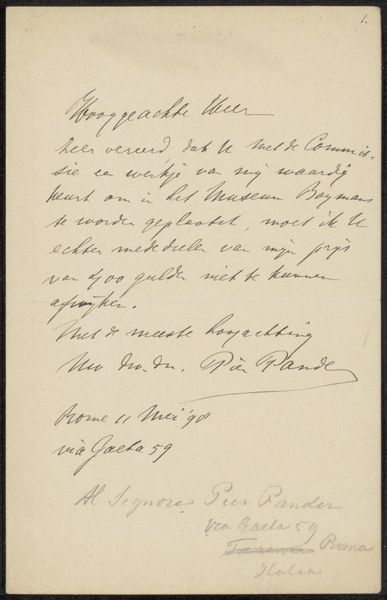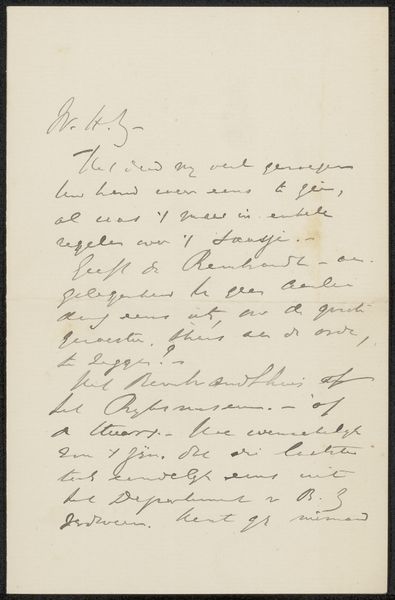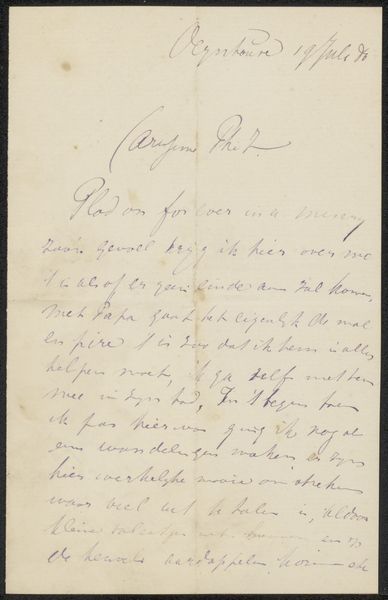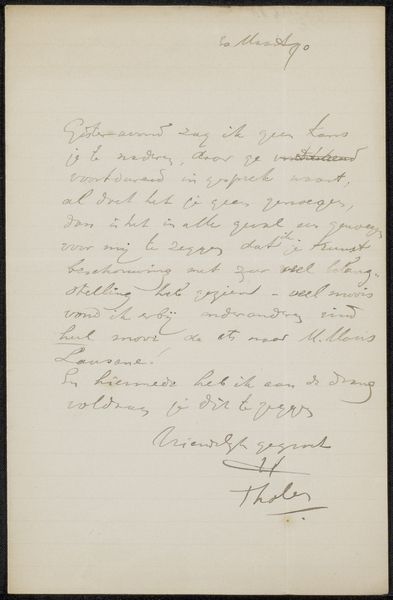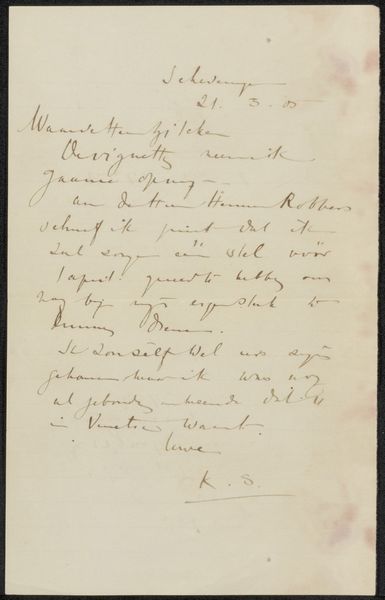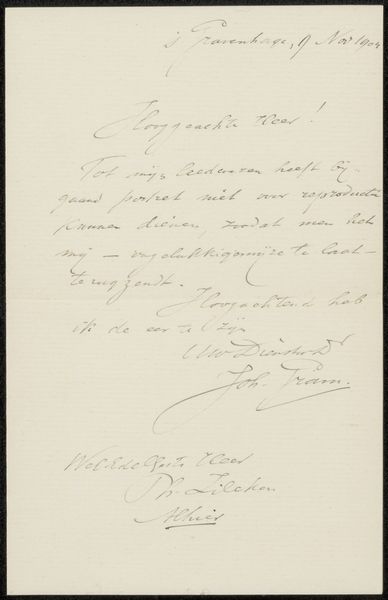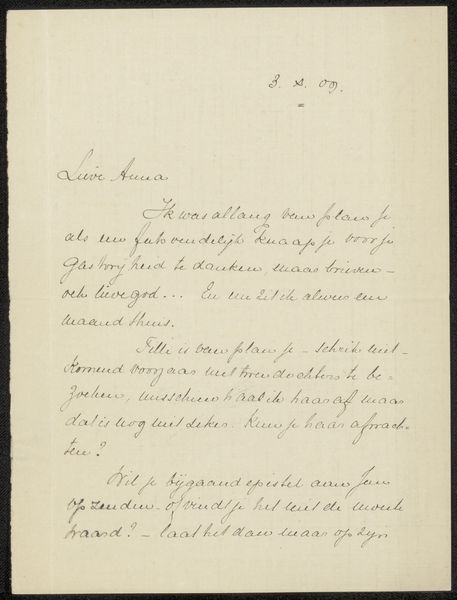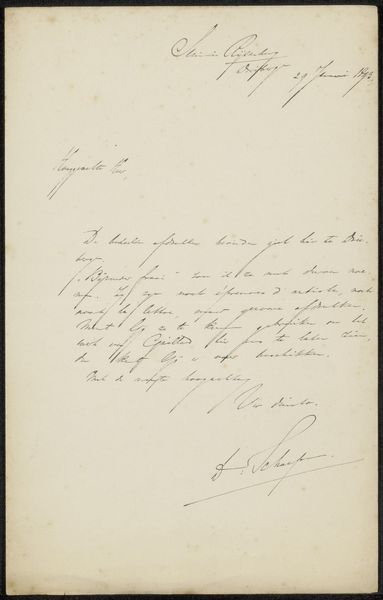
drawing, paper, ink, pen
#
portrait
#
drawing
#
paper
#
ink
#
intimism
#
pen
#
calligraphy
Copyright: Rijks Museum: Open Domain
Curator: Looking at this piece, I immediately sense an intimacy, a whisper from another time. It's a letter, isn't it? So private, handwritten... there's something about it that feels like a captured moment. Editor: Indeed. We are viewing “Brief aan Filippo Tessaro”, which translates to "Letter to Filippo Tessaro." It is thought to originate between 1887 and 1889, penned by Herman Johannes Aloysius Maria Schaepman using pen and ink on paper. The artwork is primarily calligraphy, serving as an example of intimism in the art world. Curator: Intimism makes sense here. I see it in the gesture of the handwriting, the swirls and personal flourishes of the ink. It’s more than just the information it conveys. Consider the placement of each word; it flows organically. How do you read these scriptorial images? Editor: Absolutely. As an iconographer, I am intrigued by the script as symbolic form, carrying not just semantic but also cultural weight. Think of the elaborate signature at the bottom, the recipient's name centered toward the left. These act as visual signals, status and relationships made visible, a symbolic echo of the social dynamic between sender and receiver. Curator: Fascinating! It speaks volumes about how personal communication was valued at the time and perhaps a certain reverence attached to letter writing that's largely lost now with the rise of emails and instant messages. It represents that historical period in time where letter writing had profound effects. Editor: It is also curious what meaning "R. P. I." holds near the top of the image, perhaps another symbol indicative of its period. The use of abbreviations shows a different emphasis in time, doesn’t it? To see all of this history in one writing instrument is beautiful and inspiring, but simultaneously sad. Curator: I concur with that statement. It reminds us that these documents have more cultural relevance beyond just information transfer. Editor: So very true; thank you for shining some extra light on its history today.
Comments
No comments
Be the first to comment and join the conversation on the ultimate creative platform.
